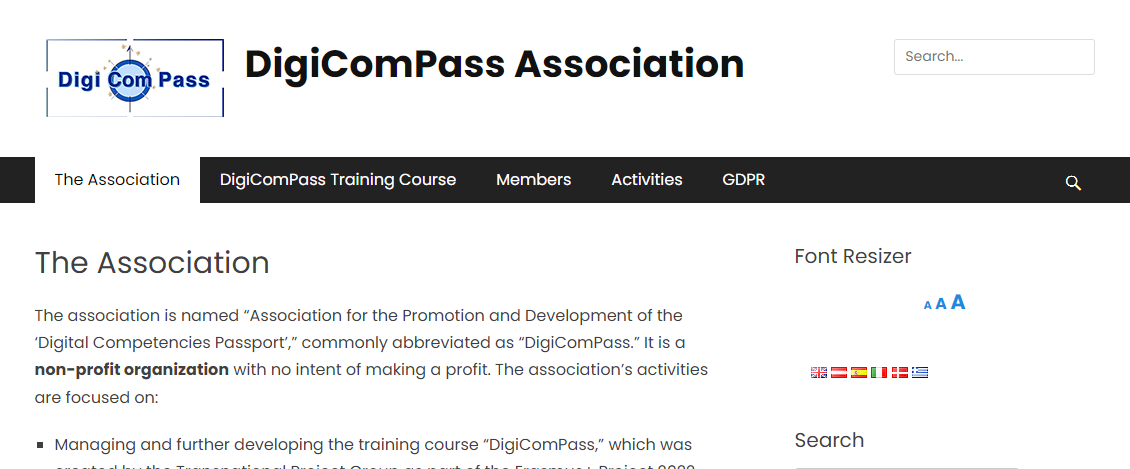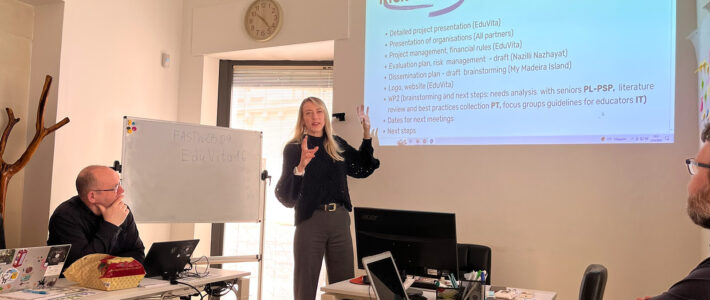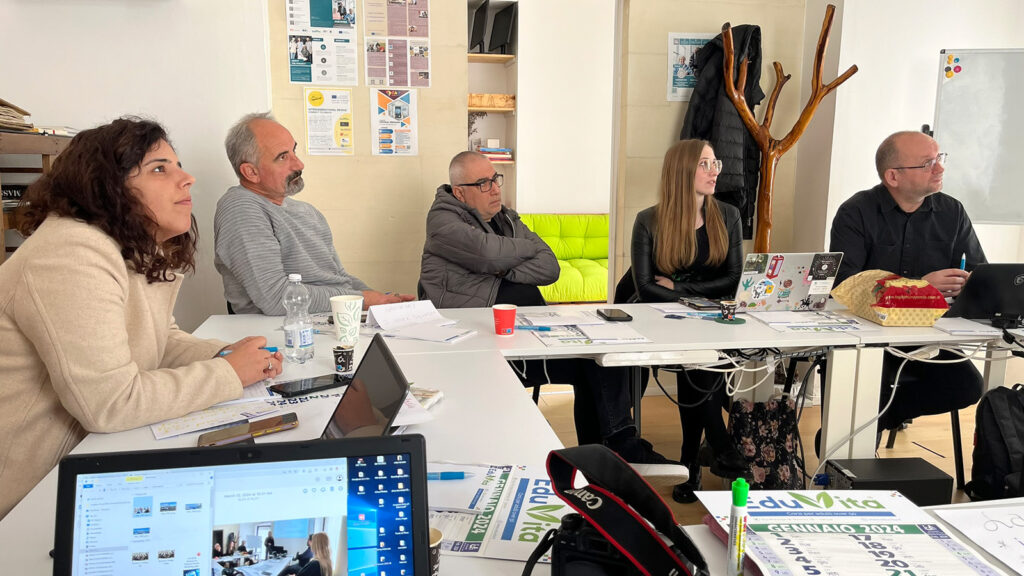EBI is a member of the DigiComPass Association
DigiComPass Association is an entity for the Promotion and Development of the ‘Digital Competencies Passport’ (DigiComPass) is a non-profit organization. Its primary activities involve managing and advancing the DigiComPass training course, originally created under the Erasmus+ Project 2022-1-CY01-KA220-ADU-000085965, and promoting it across Europe. The association also aims to facilitate networking among course providers and offer ongoing education to members and interested parties.
To achieve its goals, the association utilizes non-material means such as lectures, virtual and in-person assemblies, participation in international conferences, discussion events, publication of materials, and the establishment of a virtual library. Financial resources are obtained through entry fees, membership dues, donations, and proceeds from publications.

The board of the association
 President Dr. Alexandros Yeratziotis
President Dr. Alexandros Yeratziotis
 Deputy President and Secretary Mag. Peter Mazohl
Deputy President and Secretary Mag. Peter Mazohl
 Deputy Secretary Fernando Benavente
Deputy Secretary Fernando Benavente
 Treasurer Eleni Pistola
Treasurer Eleni Pistola
Eleni Pistola holds degrees in Environmental Studies and Well-Being, and has three years of experience as a Project Manager in European projects. She is a dedicated youth worker focused on environmental leadership and Erasmus projects.
 Deputy Treasurer Diyana Todorova
Deputy Treasurer Diyana Todorova
Diyana Todorova is a Project Manager at BrainLog with expertise in designing digital solutions for education. She leverages her strong project management background to create innovative educational platforms.
 First Auditor BEd Mag. Harald Makl MA
First Auditor BEd Mag. Harald Makl MA
Harald Makl is an expert in pedagogy and quality management in education, with multiple Master’s degrees. He has extensive project management experience and teaches at the University of Applied Studies for Teacher Education in Baden, Austria.
 Second Auditor Martin Savchev
Second Auditor Martin Savchev
Martin Savchev is the CEO of BrainLog with a background in economics and business administration. He has diverse experience in marketing, event management, and European programs, and has served as a guest lecturer in Denmark.
Scientific Advisory Board
 Errol St. Clair Smith
Errol St. Clair Smith
Errol St. Clair Smith is the Director of Global Development at Flipped Learning Worldwide and the executive producer of “Blindsided by AI.” He has extensive experience in traditional media and innovative learning methodologies.
 Ph.D Christos Mettouris
Ph.D Christos Mettouris
Christos Mettouris is a Post-Doctoral Researcher at the University of Cyprus, specializing in e-Learning and learning platforms. He has been involved in numerous EU and local projects and has expertise in recommender systems and ubiquitous computing.
 Constantinos Tsouris
Constantinos Tsouris
Constantinos Tsouris is a specialist in collaborative learning and curriculum development with extensive teaching experience in academic English. He has presented his work internationally and collaborated on various EU co-funded projects.
The Association’s Mission
The Association’s mission is to empower individuals across Europe with essential digital competencies through innovative education and community engagement. It aims to advance digital literacy by disseminating and improving the DigiComPass training course, ensuring accessibility as an Open Educational Resource. Activities include promoting the course, facilitating networking, and providing ongoing educational opportunities. The goal is to foster a knowledgeable, skilled, and digitally empowered society through lectures, conferences, publications, and a virtual library.




































